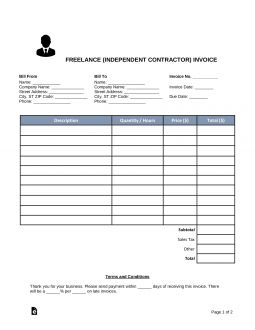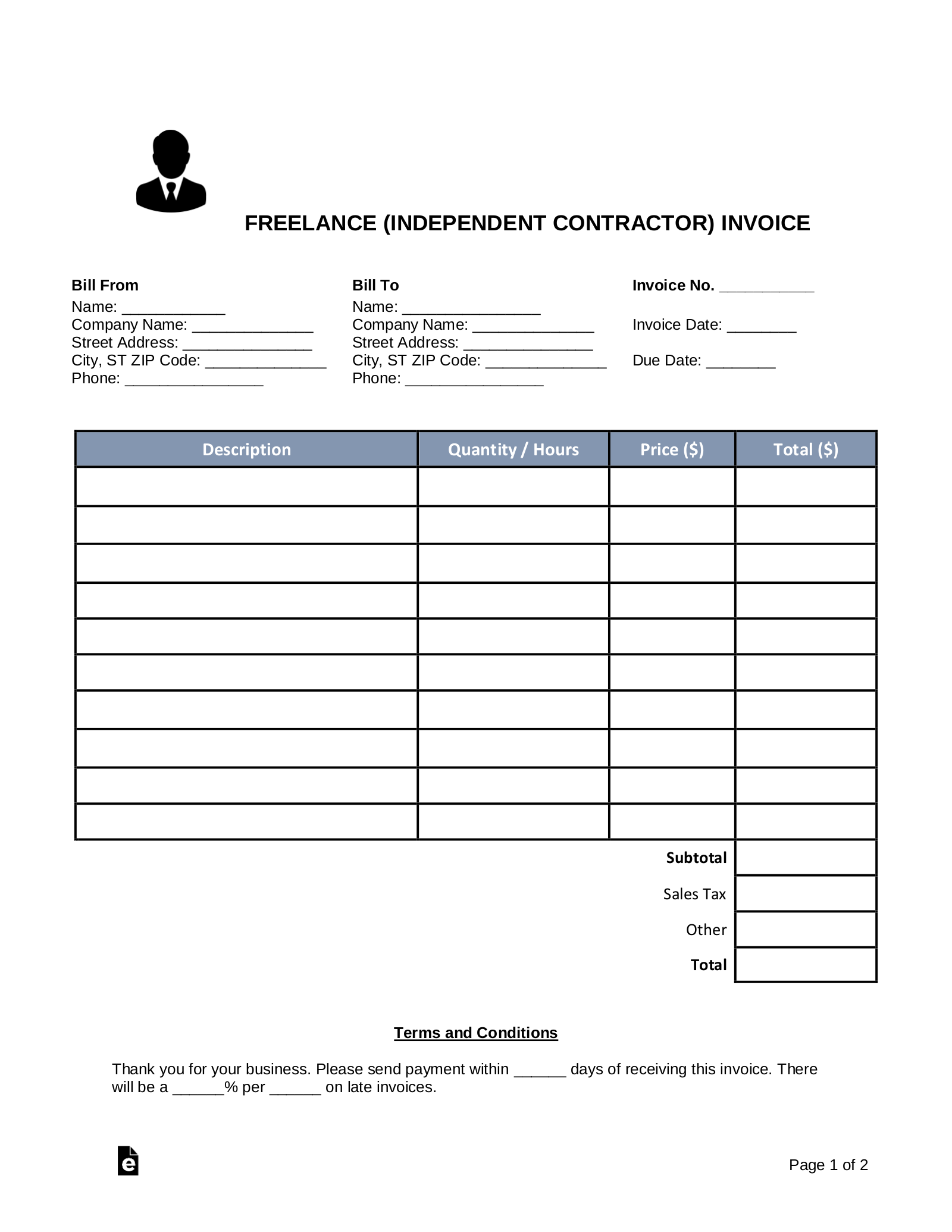Updated May 31, 2023
A freelance (independent contractor) invoice is a document that allows any contractor providing any type of service, from gardener to architect, to provide their clients with an itemized statement of services rendered. The contractor may choose to provide billing for payment at the time of service or they may choose to provide billing in specified increments. The document would also assist the contractor in keeping proper financial and service records.
Elements of a Freelance Invoice
The Freelancer Invoice serves as a formal record of work and a request for payment from a client. It should be simple and thorough:
In the least, the invoice should contain:
- Complete contact information for both client and freelancer
- Dates and details for work rendered
- Total payment due and due date
- Terms for payment and penalties for late balances
What is considered Freelance work?
In common usage, a freelancer is somebody who works on a contract basis for another party, without being formally employed by them. The term may bring to mind café-dwelling writers, web designers, and other new-economy professionals, but the range of freelancing is truly much broader. Skilled tradespeople and others doing manual work may act as independent contractors too.
In the best case, freelancing affords flexibility and autonomy. Being your own boss can feel dignified. Since freelancers often negotiate directly with clients, they may also be able to capture more of the revenue too, rather than having to split it with an employer or other middleman.
Step by Step: Freelance Invoice Guide
1. Track records of assignments/jobs
Freelancers are usually all-in-one operations, meaning that a writer or electrician who goes the independent-contractor route will have to keep books and manage client contacts in addition to primary work responsibilities. All work that is completed should be carefully tracked and reported.
2. Adjust for final billing
Should things change as the job proceeds, the invoice can be updated to reflect final costs. Revisions to job specifications should generally be discussed first with the client, so that a revised invoice does not catch them unawares.
3. Ask for payment option
To the extent possible, freelancers should try to cater to clients’ payment preferences. While an all-cash business is not likely to make sense, a savvy contractor might offer several options for payment, including PayPal, Square or other credit card processing, and more conventional means like checks.
4. Deliver Freelance Invoice
Make sure that the client receives the invoice and follow up as necessary. Since the invoice clearly indicates the balance due and the due date, the client should have no doubt about his or her payment obligations.



